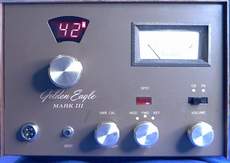H
Hook948
Guest
Got a old computer laying around? Yank out the power supply and with a simple mod, you have a cheap 12.5-13.5 volt power supply. There are lots of wires coming out of the PS when you take it out of the computer. Snip off all wires at board except 6 black, 2 red & 4 yellow wires. Solder the 4 yellow wires together for a 12.5-13.5v HOT lead, Solder 4 black wires together for the GROUND, Next solder the other two black wires together for a 5v GROUND, Solder the two red wires together for a 5v HOT, solder the 5 volt hot and ground to a 3 ohm 20W resistor or (2 10W wired parralel) and mount the resistor/s to the vent in the P/S case so it will "sink" some of the heat and be in-line with the air flow from the blower. This will put about a 1 amp load on the 5 volt section and allow the regulator to work. If the power supply you have has a pot to adjust output, you can turn it up to 13.5v MAXIMUM out put (any more and you will stress the traces on the board) this will also increase the 5v a little but not much. If yours dosen't have a adjustment you can change the output by changing resistor values in the circut but you are on your own as to what will work as there is no "set" standard as how the manufacturer designs the circut. A 400W PC power supply will make a 20 amp continuous switching power supply. IF you pick up RF noise from the supply you can wrap the yellow hot lead about 15 turns through a torid and this should solve the problem.<img src=http://www.ezboard.com/intl/aenglish/images/emoticons/wink.gif ALT=" "> Use your prefference on a power switch and terminals. I used the switch from the old computer, a couple of 1/4" X 1 1/4" long bolts and drilled out a set of knobs from a old car sterio for insulators.NOTE If using bolts for the terminals, file off the shinny coating on top of the head before soldering the wires to the bolts. Total cost...$1.89(I had to buy the resistor). Add some rubber feet to the bottom if you want. Not bad for a small power supply <img src=http://www.ezboard.com/intl/aenglish/images/emoticons/happy.gif ALT="
"> Use your prefference on a power switch and terminals. I used the switch from the old computer, a couple of 1/4" X 1 1/4" long bolts and drilled out a set of knobs from a old car sterio for insulators.NOTE If using bolts for the terminals, file off the shinny coating on top of the head before soldering the wires to the bolts. Total cost...$1.89(I had to buy the resistor). Add some rubber feet to the bottom if you want. Not bad for a small power supply <img src=http://www.ezboard.com/intl/aenglish/images/emoticons/happy.gif ALT=" ">
">
</p>
</p>

